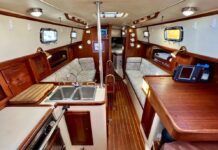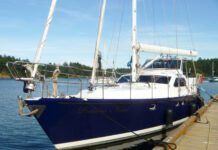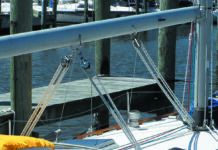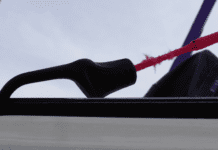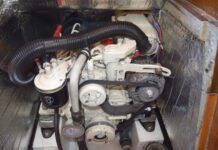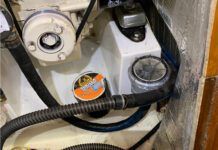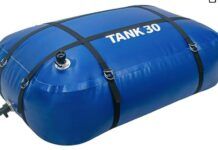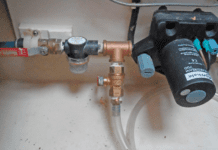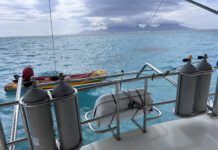Excerpted from Renee D. Petrillo’s A Sail of Two Idiots
In 2006 the boat market was still doing pretty well, if you were a seller. An extremely used 35-foot catamaran (about the smallest one ever made) was going for around $125,000 and up vs. similar- sized brand-new basic factory/production monohulls going for around $80,000. Yes, a single hull would have been much cheaper, but we didn’t want one.
How will you pay for your boat? There are lots of ways: inheritance, stocks, savings, loans, gifts, banks, hold ups. We sold our house.
In order to come up with how much boat we could afford, we valued our home and took the worst-case scenario (or what we thought was the worst-case scenario-the lesson is coming).
Although we figured we could probably sell the house for enough to pay off a boat, there would be very little left over to actually sell it. We decided to use part of the house proceeds to put down a down payment on the boat (20 percent is standard) and then obtain a no-qualify loan to cover the rest. The remaining home profit would go into a money market fund, which we figured could have us sailing for up to four years.
The numbers looked like this: Sell the house for $340,000. After the commission and loan pay-off, we’d have $199,000. If we put 20 percent down on, say a $125,000 boat, we’d have about $174,000 for our money market fund. That money would cover the cost of our living (boat payments, insurance, food, fun, and boat repairs-that last one should have been listed first). If we figured on spending $50,000 annually on these items, we could expect to be on the sea for three to four years, which seemed reasonable enough. We figured that when we sold the boat at the end of that time, the proceeds would cover the boat and everything would even out. You have to admit it was a good plan (a four letter word), and it sort of happened like that. Sort off.
Lesson 1: Own Up
Was this a good idea? With hindsight, I can now say that I wish we had paid for the boat outright, which would have prevented our obsessing about keeping up its resale value (and obsess we did). Living free of rent/mortgage/debt would have been much more liberating. Had we bought the boat for cash, we could have lived on it while working another year or two to come up with some spending and maintenance money. We also might have worked out the kinks and maybe even learned how to sail while we accumulated more cash. Of course, then I wouldn’t have had a book to write.
For more lessons based on her real-world experiences cruising the Caribbean, written in her own humorous, self-effacing manner, purchase Renee D. Petrillo’s A Sail of Two Idiots.



